FROM THE SKYLIT CEILING of her second-floor studio, Emily Jones has unfurled a wide vinyl backdrop. Against this seamless, white void, she films the dark, expressive face of an actor as he sits motionless, then nods slightly, grimaces, and stares outward. By May she will edit hours of the images into a 45-minute video and screen it after presenting two other works at her MFA thesis exhibition. But in March, the final project exists only in her imagination.
Jacqueline Hendrickson began the MFA program as a painter and will finish it as a sculptor. On a bitter February evening, she presents a work-in-progress at a departmental critique. Two heavy blocks of wood suggest a pillory, she says, and delicate chains draped over the top serve to “gender” the object. The 25 faculty, students, and visiting artists gathered around the piece unleash a series of supportive but probing questions.
“What do you mean by gendering?”
“Does this work have a title?”
“Why is it on the floor?”
“What do you want people to get out of this?”
Welcome to the MFA thesis project, a requirement and rite of passage for every student who completes the master of fine arts program in the Department of Visual Arts. Jones and Hendrickson—two of three students in an unusually small second-year MFA class—submitted proposals for their projects this past fall. All winter and into the spring, they labored on the pieces that will appear in their thesis shows in May.
Jones, a video artist, calls the second and final year of the MFA program “a build-up to graduation, to the exhibitions. Everything you’ve worked on in the first year is now coming to fruition. It’s a privileged environment.”
Among the privileges: every student gets private workspace at Midway Studios, the department’s historic home at 60th Street and Ingleside Avenue. Some of the spacious, high-ceilinged studios have a warehouse feel; others recall the sunny upstairs bedrooms of an old farmhouse. Jones’s studio overlooks another work-in-progress: the Reva and David Logan Center for the Arts, under construction next door. The department will move to the vertical tower in spring 2012.
As first-years—normally in a class that numbers between eight and twelve—MFA students take required seminars. As second-years they choose electives and, to gain teaching experience, may serve as assistants for undergraduate visual arts classes. As work on their thesis projects intensifies, they host regular studio visits from professors and visiting artists. “One great thing about the program is that we meet with every faculty member at least once each quarter,” says Hendrickson. “Once we graduate, that’s going to be something we’ll miss—that kind of tight community.”
Twice each quarter, MFA students present their work at departmental critiques. Attendance is required for all faculty and graduate students; guest artists and undergraduate visual arts majors are also invited. The 40-minute sessions run back-to-back at Midway and Kimbark Studios over two days, with participants moving from room to room to see and discuss every project on display.
Anyone can speak at a “crit,” and often the artist presents her work with little or no introduction. Questions and comments are spontaneous, but they show an awareness of the artist’s past work and evolution. The sessions aim to “create a sense of intimacy, dialogue, and familiarity with the graduate student’s work,” says Catherine Sullivan, assistant professor and director of graduate studies in visual art. Frequent critiques help students get comfortable discussing their artistic practice, giving them “the ability to talk about their work from their own perspective with curators and programmers, so that the interpretation of their work is in their own hands.”
Jones found the critiques to be “intense and spectacular” when she visited Chicago as a prospective student from Halifax, Nova Scotia. “They can be tough, but they’re my favorite part of every quarter.” Hendrickson agrees, “The emphasis on criticality is good for us. I like to be pushed to the very edge and then have to work it out.” Students benefit when professors and peers challenge their methods and choices, but some find the public aspect of critiques difficult. Talking about one’s art can help others to understand it, but some work, they argue, isn’t conceptual—it’s just pencil on paper.
As MFA shows approach, artists engage more deeply with their practice and with the public. Every student must give a preliminary artist’s talk, prepare a paper, and deliver a second talk in conjunction with her exhibition. “The emphasis is on making sure they have as much as independence as possible when they leave the program, and part of that is knowing how to mobilize a discussion around the work,” says Sullivan. “The artist’s talk is a formality in the art world, and it’s helpful to know how to do a good talk.”
For years, Chicago MFA students presented their thesis projects in group shows; since 2007 they have done solo shows instead. Most prepare gallery-style exhibitions at DOVA Temporary, the department's community exhibition space, but some students create site-specific paintings, outdoor installations, and performances. The idea is “to give people the chance to see what you might do if given the whole floor,” says Sullivan. “This creates a healthy analogy to what we hope students will end up doing when they graduate—not waiting around for invitations to exhibit their work, but constructing opportunities to self-produce and curate exhibitions and to really be in control of their careers.”
The solo format produces results, say students, and the program’s intensity pushes them to grow as artists. Hendrickson, a former high-school art teacher, was accepted to the MFA program as a painter “with work that was situated in the Victorian era.” Prodded by a faculty member who “expressed the opinion that I was making work that looked like art instead of making art,” she began to create sculptural pieces that she finds “much more contemporary, focused, and relevant.” She also took Art in the Twenty-First Century with Matthew Jesse Jackson, a course that required her to consider questions such as "What is art?" and "Is it art?" in the contemporary landscape.
After graduation, Jones would like to combine her video work with teaching. Hendrickson has applied for artist’s residency programs in her native Wisconsin. Both expect their art to evolve and change with time. “It isn’t as if by putting on these final shows we have everything figured out,” says Hendrickson. “For the rest of my life, I’m going to be making pieces and developing the conceptual part of my practice. This is just the beginning.”
2011 MFA Thesis Events
Emily Jones
Take Back the Night
April 27–30
Artist’s reception on April 29, 6–9 p.m.
DOVA Temporary
Blinder
May 20
Video screening, 7 p.m.
Film Studies Center
Jacqueline Hendrickson
DummyNumb
May 11–14
Artist’s reception on May 13, 6–9 p.m.
DOVA Temporary
Gabrielle Garland
May 4-7
Artist’s reception on May 6, 6–9 p.m.
DOVA Temporary
MFA Class of 2011 Group Show
May 18–21
Artists’ reception on May 20, 6–9 p.m.
DOVA Temporary
All events are free and open to the public. DOVA Temporary is located at 5228 South Harper Avenue, Chicago IL 60615.

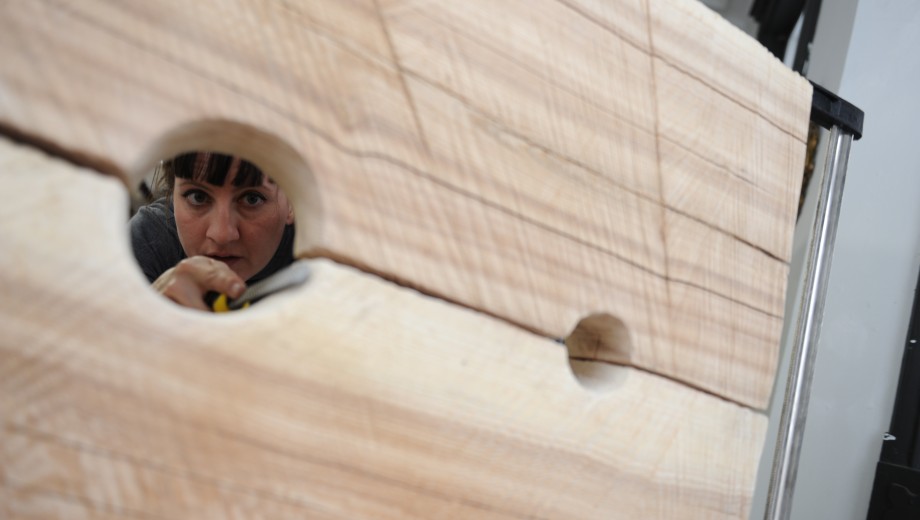
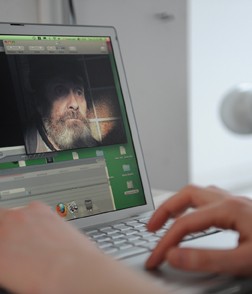
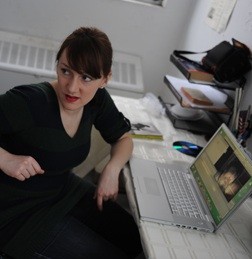
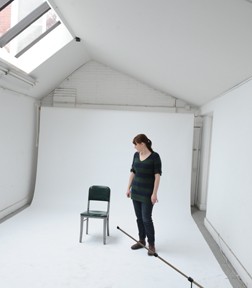

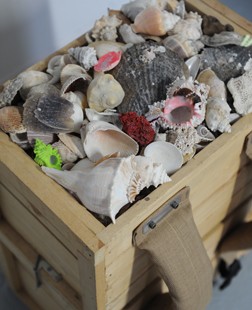
Add new comment